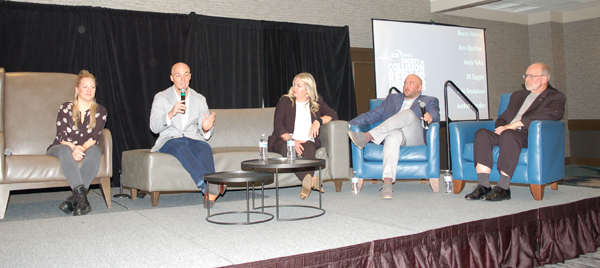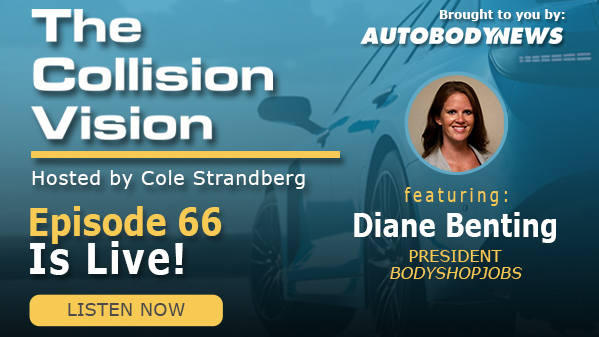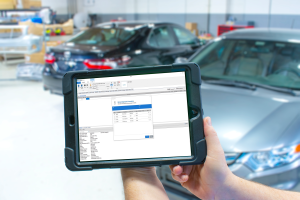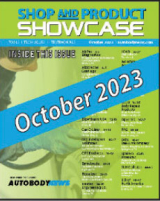A national survey in April found auto body shops on average have a work backlog topping four weeks, and during the Society of Collision Repair Specialists’ (SCRS) Repairer Roundtable this spring, a panel was asked whether that “unique scenario” in the industry should play into a collision repair business’ decisions related to participation in direct repair programs.
Three association leaders and two shop owners responded.
Jill Tuggle, who has been executive director of the Auto Body Association of Texas (ABAT) for five years, thinks it should play into a shop’s decision.
“If there ever was a time that you could test the waters on operating independently of those contracts, it would be now,” Tuggle said. “Because you’re going to get the work. The work is there. You already can’t repair everything you have. If that’s a business decision you have been toying with, now would be a good time to do that.”
Other association leaders with longer tenures offered some cautions to consider.
“In order to do that, they have to have alternative plans,” Jordan Hendler of the Washington Metropolitan Auto Body Association (WMABA) said of shops choosing to exit DRPs. “I don’t think you can just sever those relationships. I think you have to have a solid plan for either marketing or getting into OEM certifications. In our association, the most successful members are specialized and OEM-certified in at least five or six brands, minimum. You need to know how you are going to create your own customer stream and own your portion of the market in a smart way.”
Some collision repairers have chosen locations with little street visibility, Hendler said, lowering their overhead because they knew direct repair referrals would bring work to the door.
“If you just shut those [DRPs] off, you now have no customer visibility,” Hendler said. “There’s a lot of pressure just to get rid of all your DRPs [without a plan] and think you’ll be fine. I think that’s a dangerous trap for shops. We’ve seen that happen.”
Aaron Schulenburg of SCRS agreed each business has to evaluate its own situation.
“I don’t think any one model is right or wrong,” he said. “There’s a lot of successful businesses up here [on this panel] and in the audience and in our membership base that have found success in every type of model.”
He said the current situation does provide collision repairers with an opportunity to “prioritize where their profitability lies,” noting even large multi-shop operations (MSOs) that focus on DRP work are saying they are evaluating which of those programs offer the best fit.
Ron Reichen of Precision Body & Paint, which is opening its fifth location in Oregon this year, said he sees too many shops operate based on fear.
“Fear is an emotion, and good business decisions aren’t based on emotion,” Reichen said. “We’ve always believed that calculated risk is important. But the first part of that is ‘calculated.’ Do your research. Do your homework. Is it a good fit for you?
"I think the insurance carriers have leveraged fear: ‘We’re going to shut you off and you’re not going to have any of our work.’ That’s a fallacy," Reichen said. "Even if you’re a DRP model, you’re building relationships with that client base. Those clients are still going to come back to you. They may change insurance carriers two or three or four times in their driving history. So [the insurer] doesn’t own that customer, but you do. Even if you are a DRP model, work at owning that customer. Then you can wean yourself off of [DRPs] and not make decisions out of fear.
"Would you [be happy with] 20% less work if you made 20% more on the remaining 80%? Of course. That’s a calculated risk,” he added.
Andy Tylka was operating a six-location MSO in Indiana until recently, when two MSOs in other markets chose to sell their businesses to Tylka rather than to a national MSO. That expanded his company to 15 shops in 2.5 years. He acknowledged his choice to stay with a DRP model is, as it is for many shops, based to a degree on fear.
“Because, obviously, growth results in loans,” Tylka said. “So if I’m not having customers come into my shops, I’m not paying these loans, and I’m responsible for 185 families.”
He said collision repairers should recognize the current backlog the industry enjoys “won’t last forever.” All that said, he acknowledged he’s using this time to make some changes.
“Those with the DRP model should be re-evaluating what relationships they do want to keep and which ones they don’t, even if they stay with a DRP model,” Tylka said. “That’s pretty much what we did.”
Schulenburg said SCRS works to highlight collision repairers, like some of those on the panel, who have the confidence to operate in a model of their choosing, such as without DRPs.
“I think there are a lot of businesses that I speak to that don’t realize there are businesses that operate that way,” Schulenberg said. “It’s not a matter of saying one model over another. But there are businesses that operate successfully in ways that may feel foreign, but it’s their degree of confidence that drives the success.”










John Yoswick